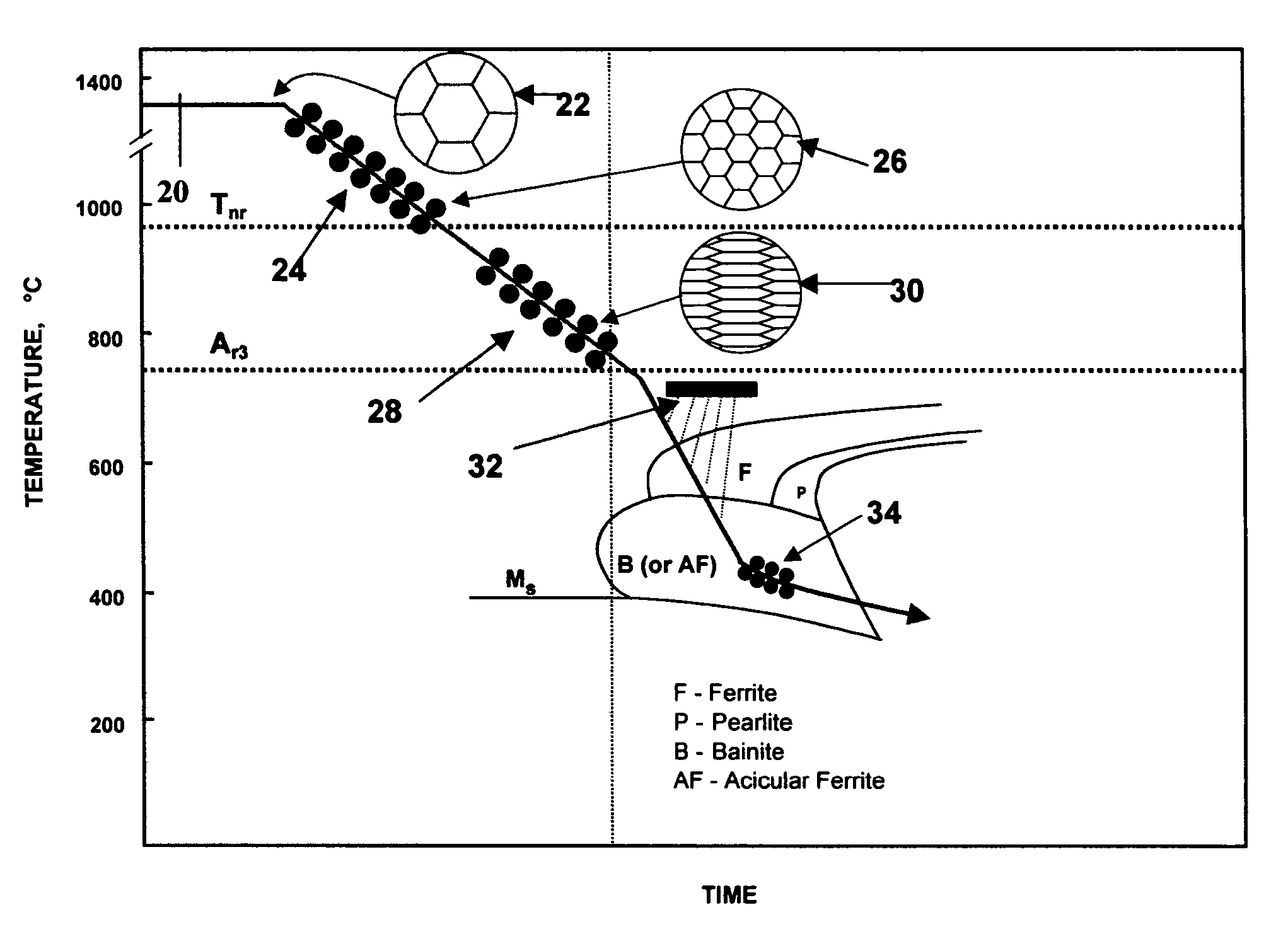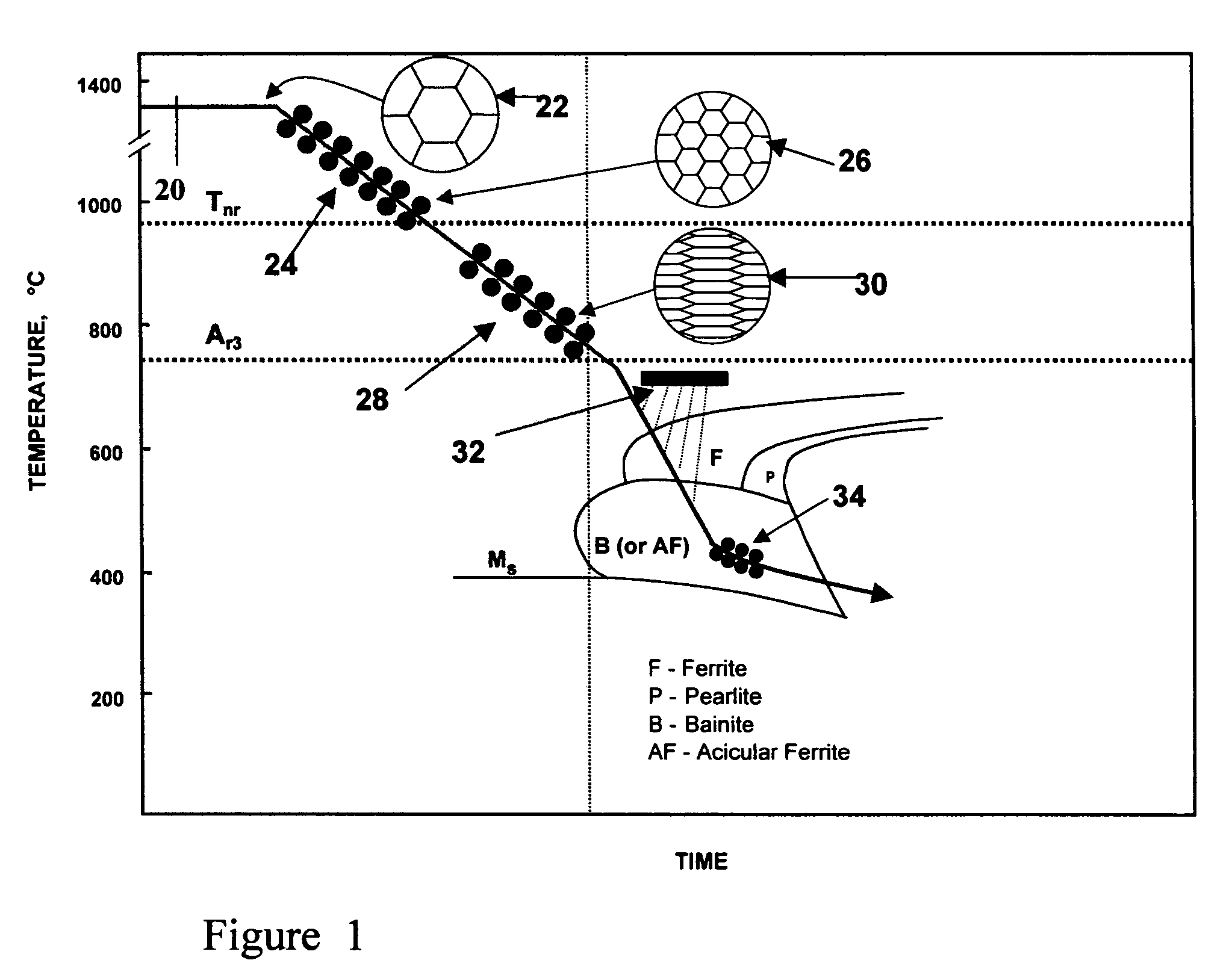High-strength micro-alloy steel
a micro-alloy steel, high-strength technology, applied in the field of high-strength micro-alloy steel, can solve the problems of loss of desirable microstructure characteristics of steel, large precipitate particles, and ineffective off-line heat treatment to enhance precipitate strengthening in steel, etc., to achieve enhanced precipitation strengthening and increase the volume fraction of fine precipitates
- Summary
- Abstract
- Description
- Claims
- Application Information
AI Technical Summary
Benefits of technology
Problems solved by technology
Method used
Image
Examples
Embodiment Construction
[0090]FIG. 1 is a schematic representation of an exemplary embodiment of the process of the present invention for producing a high-strength, micro-alloy steel having enhanced precipitation strengthening. The temporal and temperature path of the steel during this process is indicated as path 20 in FIG. 1.
[0091]The exemplary process is used for producing a line-pipe-grade steel that is particularly suited for pipeline and pressure vessel applications. This line-pipe-grade steel has the following chemistry:[0092]at least about 0.01 and no more than about 0.1% wt. carbon;[0093]at least about 0.03 and no more than about 0.12% wt. niobium;[0094]at least about 0.008 and no more than about 0.03% wt. titanium;[0095]at least about 1.0 and no more than about 1.9% wt. manganese;[0096]at least about 0.1 and no more than about 0.5% wt. molybdenum;[0097]a maximum phosphorus content of about 0.02% wt.;[0098]a maximum sulfur content of about 0.015% wt.;[0099]a maximum nitrogen content of about 0.015...
PUM
| Property | Measurement | Unit |
|---|---|---|
| Temperature | aaaaa | aaaaa |
| Temperature | aaaaa | aaaaa |
| Temperature | aaaaa | aaaaa |
Abstract
Description
Claims
Application Information
 Login to View More
Login to View More - R&D
- Intellectual Property
- Life Sciences
- Materials
- Tech Scout
- Unparalleled Data Quality
- Higher Quality Content
- 60% Fewer Hallucinations
Browse by: Latest US Patents, China's latest patents, Technical Efficacy Thesaurus, Application Domain, Technology Topic, Popular Technical Reports.
© 2025 PatSnap. All rights reserved.Legal|Privacy policy|Modern Slavery Act Transparency Statement|Sitemap|About US| Contact US: help@patsnap.com



